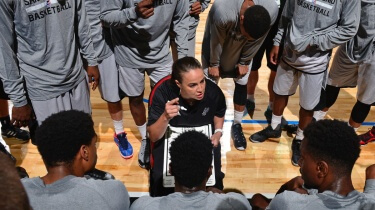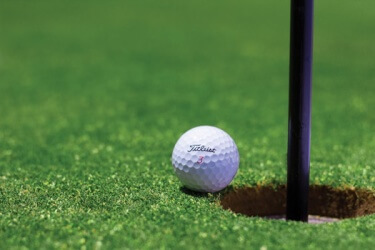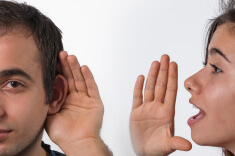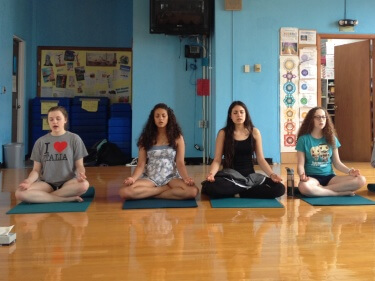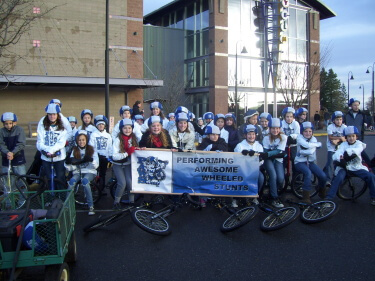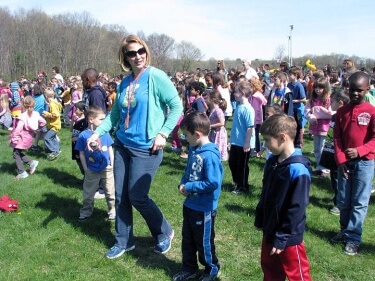
Years ago I stopped making New Year’s resolutions. They became pointless, depressing when unachieved, and as statistics show, nearly all the resolutions made (1 in 3 people apparently resolve to change something), about 75% of them last only one week! Six months into the resolution about 46% are still on target. That number continually declines as times goes on. That’s not to say that resolutions should never be made. Rather we should be more realistic in what it is exactly that we want to change or improve upon. We all know the old mainstays…. try to lose weight, quit smoking, volunteer more time, get in shape, save money, etc. But how about some work related resolutions? I came across some very inspirational articles in the PELinks4U January 2011 archives (Steve Jefferies and Sam Baumgarten, Kleinman, and Amy Sue Hesselgesser). Many good ideas were stressed in all those articles so I will try not to be too repetitive. Here’s my personal list:
- Pay more attention to those students who are under the radar
The kids who are not the athletes are the ones who are probably going to be running our schools and districts in the future. We need to make them feel good about themselves because the fact is, THEY ARE THE MAJORITY. Each day I try to focus on a student I really don’t know or who is so quiet and on the periphery that he or she easily gets lost in the crowd. Some days are so busy and hectic I forget to make a connection. But that doesn’t mean that the resolution ends! Tomorrow is another day and I try again.

- Keep yourself fit as a positive role model
Yes, this is a traditional resolution but for years I’ve been promising myself to join a gym. I believe I’m in “role model” shape but this was about something more intrinsic. Plus, I’d really like to be able to climb the rope a bit higher when I do my demonstration during our “Tumbling/Climbing Unit!” The kids love it when you can do things and share your own story. They can relate better to your own struggles and goals when they’re struggling themselves. It lets them know that even though they may not be able to perform a task today, someday they will succeed if they set their minds to it. - Learn to use a new piece of technology & incorporate it into your lessons
I used to love technology but it changes so fast now that it’s tempting to simply choose not to keep up. Yes, I have an I-pad (generously donated to me by my sister) but my IPod is a “classic” and my cell phone is a “pay as you go” flip phone. I have played around with some apps and have used Team Shake to make teams in class. I love this app because I like to separate “friends” and when they complain that they’re not on the same team I say, “It’s the computer!” If my district were more liberal with the use of the Wi-Fi code then I would probably use it more but at this point in time I’m fairly limited. I guess this is an item to put on my list for next year. It’s a big-ticket item to get the access complete with a Smart Board so I’m going to file that one away for a future date. - Conduct surveys with your students AND parents
Surveys are the most underused means of gathering information to improve your program. I think that maybe people are just too afraid of what they’re going to find out. I conducted one last spring and the results were not as harsh as I had expected. In fact, the results were very positive with only a few concerns about a child’s weight and perhaps the fact that our school does not meet the state mandate for time spent in physical education class. Most felt that fitness, social emotional learning, and character education were the most important things their child could learn in my class. This survey encourages me to keep doing what I’m doing, which was nice to know. - Clean out your office and equipment closet!
I am the “Queen of Keeping” and my colleagues make fun of me. I have documents that I inherited nearly 20 years ago from my predecessor along with records, cassette tapes, floppy discs and lots of broken or deflated equipment. I guess you could say that I’m from the era of “You Never Know When You Can Use It!” Starting at the beginning of this year I started filling the garbage bags and confess that at times it was painful. But as painful as it was, it felt good when it was gone! Now I have less clutter and even discovered a few “new” items that I had hidden away. Two of my favorite books are Junkyard Sports (B. DeKoven) and Creative Physical Activities & Equipment (B. Davison) both from Human Kinetics. I also held onto a few of my deflated basketballs – they work great for passing only activities!
- Go through old files and rediscover those great games/activities that you’ve saved
After you’ve been to a gazillion professional conferences and workshops you tend to “file away” tons of information and then forget to look at it all. Every so often I make it a point to go through all those files and start using those great activities that I thought were so terrific once upon a time. I’ve discovered that what is a good activity for one unit can sometimes be modified and used in another. - Take control of your program!
I don’t know about you but I’m getting a little tired of the expectation that I’m supposed to incorporate ELA (English Language Arts) or Math or some other “Core” subject into my daily lessons. The fact of the matter is I do try to integrate but it’s in line with Physical Education and Physical Literacy, not as a separate academic subject for which I have not been trained. We need to educate our administrators and make them aware of what our discipline is about and what students learn in our environment. The brain and body connection is so important but my students don’t need paper and pens or pencils to prove it. Don’t get me wrong, learning through movement is a great opportunity and lots can be taught with an interdisciplinary approach but that’s not my job description. - Get at least 1 colleague to join SHAPE America and/or your local State AHPERD
I’m on the Board of my local state AHPERD Zone and have a passion for professionalism. Not everyone agrees about the importance of supporting our organizations and the excuses of why not to join are varied and endless. If you can get just one person to sign up, that makes us one person stronger! Out of 42 physical education and health teachers in my own district, only 5 are current members of our State AHPERD. I think I’m the only one who belongs to SHAPE America as well. I’m working on 4 more, a bit ambitious but I’m starting with those whose memberships have lapsed and they just need a nudge (or several!) to rejoin.

